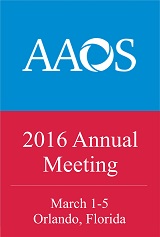
AAOS 2016: Immobilization in external versus internal rotation after shoulder dislocation

AAOS 2016: Immobilization in external versus internal rotation after shoulder dislocation
Immobilization in External Rotation After Primary Anterior Shoulder Dislocation Reduces the Risk of Recurrence
CONFERENCE ACE REPORTS
This ACE Report is a summary of a conference presentation or abstract. The information provided has limited the ability to provide an accurate assessment of the risk of bias or the overall quality. Please interpret the results with caution as trials may be in progress and select results may have been presented.
Synopsis
50 patients with traumatic primary anterior shoulder dislocation were randomized to immobilization in external or internal rotation following reduction. The purpose of this study was to compare recurrence rate between groups over a 2-year follow-up period. The were no significant differences in recurrence rate between groups when analyzing the entire sample; however, a subgroup analysis of patient...
To view the full content, login to your account,
or start your 30-day FREE Trial today.
FREE TRIAL
LOGIN
Forgot Password?
Explore some of our unlocked ACE Reports below!

Learn about our AI Driven
High Impact Search Feature
Our AI driven High Impact metric calculates the impact an article will have by considering both the publishing journal and the content of the article itself. Built using the latest advances in natural language processing, OE High Impact predicts an article’s future number of citations better than impact factor alone.
Continue



 LOGIN
LOGIN

Join the Conversation
Please Login or Join to leave comments.